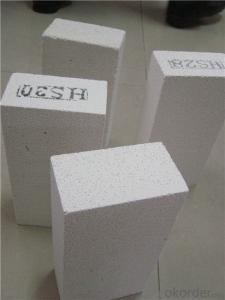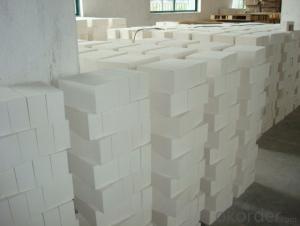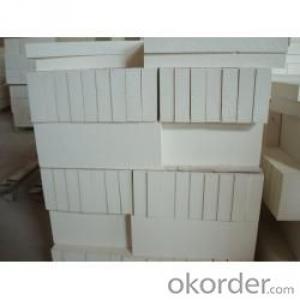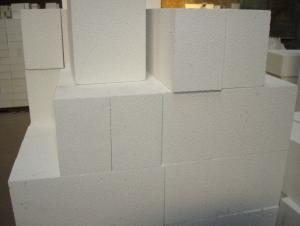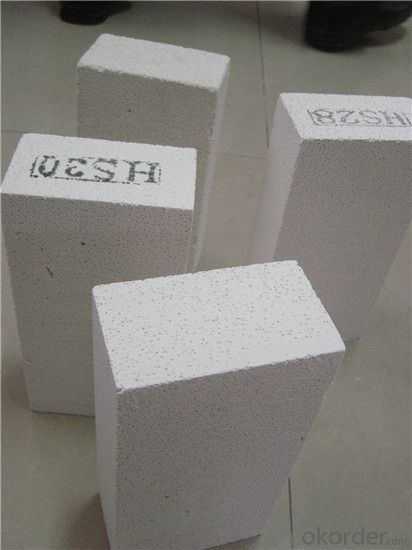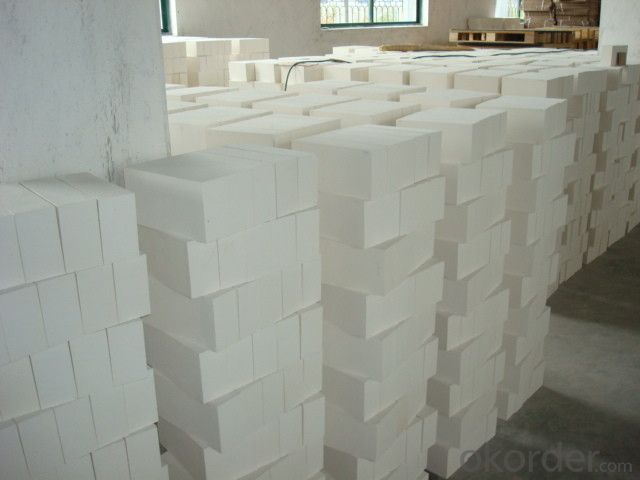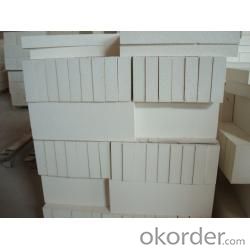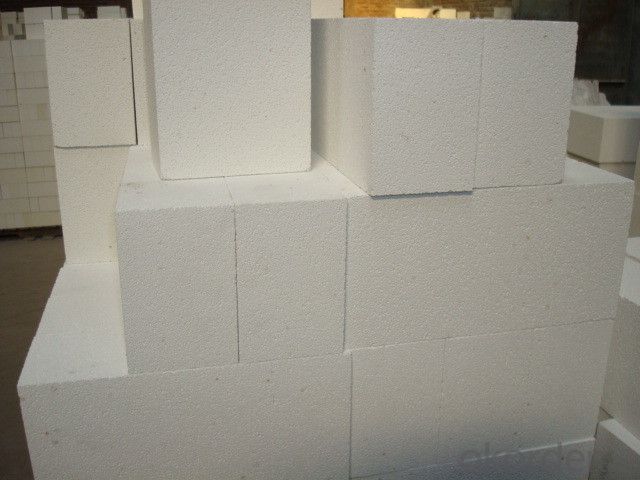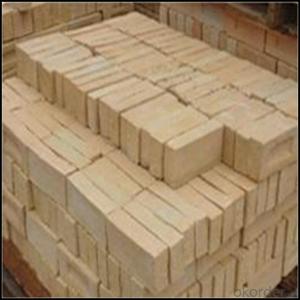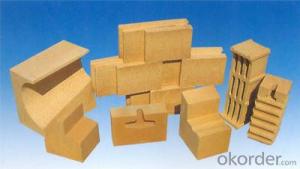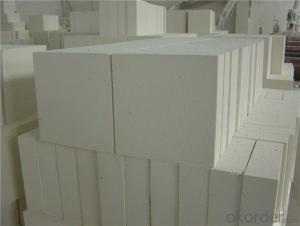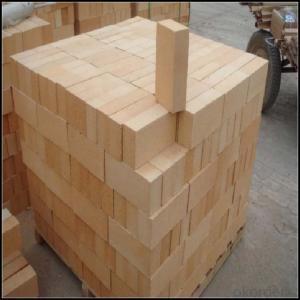Insulating Fire Brick for Blast Furnace High Alumina
- Loading Port:
- Qingdao
- Payment Terms:
- TT OR LC
- Min Order Qty:
- 1 m.t.
- Supply Capability:
- 1000 m.t./month
OKorder Service Pledge
OKorder Financial Service
You Might Also Like
Thermal Insulation Fire Clay Brick
Refractory brick is a block of refractory ceramic material used in lining furnaces, kilns, fireboxes, and fireplaces.
We provide high quality Refractory Fire Bricks that are used on wide range in the various industries like Cement, Glass and Steel. Refractory Fire Bricks are provided as per the quantity and specifications required by the customers. We provide an extensive range of Refractory Fire Bricks at reasonable prices that depend upon the quantity ordered.
Application
Insulating Fire Brick are used for the lining of converter, alternating current arc furnace, direct Current arc furnace and the ladle slag line, etc.
Company Advantage
(1)Long Insulating Fire Brick manufacture history: 25 years manufacturer
(2)Advanced equipment
(3)Diversification of production standards: ISO ANSI FEPA JIS ASTM
(4)Professional marketing team and after-sale service
Insulating Fire Brick main feature:
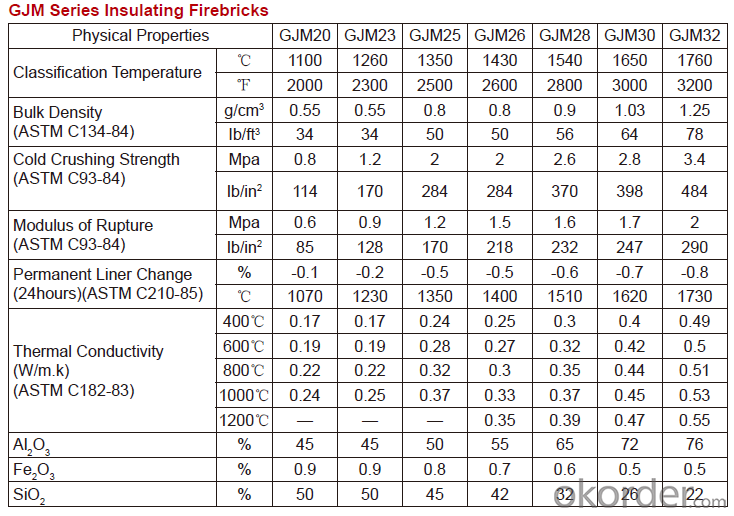

Equipment
1 unit of Ceramic Abrasive (SG Abrasive) pilot production line
2 units of Compact grain Abrasive pilot production lines
1 unit of high-end coated abrasives (abrasive cloth) production line
2 units of Boron Carbide production lines
Q1 What’s the transport method?
A1 FCL delivery goods with wooden pallet or wooden case by sea; If LCL delivery, must with wooden case; Sometimes need open top, flat rack or bulk cargo.
Q2 What’s the required payment term?
A2 Generally 30% TT as the prepayment, 70% TT before delivery. If need, 100% Irrevocable Letter of Credit or negotiation.
Q3 Which country are our products exported to?
A3 Apart from entire Chinese market, the US, Russia, Japan, Korea, Australia and some Southeast Asian Nations.
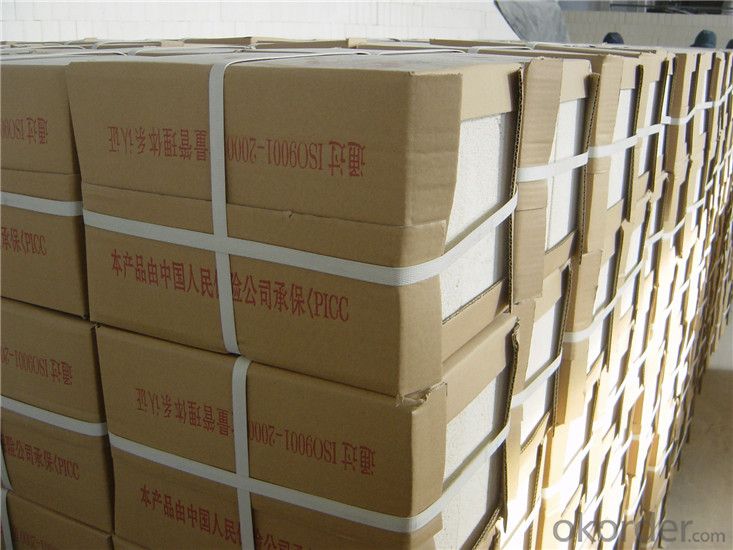
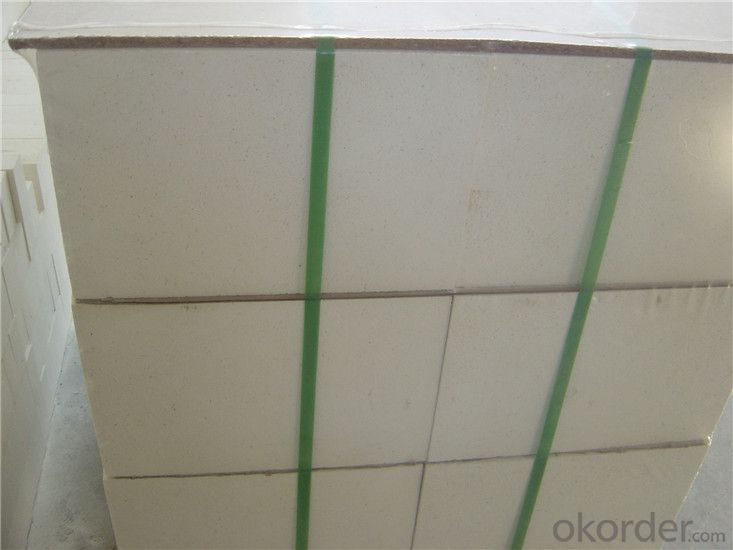
- Q: Can insulating fire bricks be used in the construction of smelters or foundries?
- Yes, insulating fire bricks can be used in the construction of smelters or foundries. Insulating fire bricks have excellent thermal insulation properties and can withstand high temperatures, making them suitable for lining the walls and floors of smelters or foundries. They help to retain heat, improve energy efficiency, and protect the surrounding structures from extreme temperatures.
- Q: Can insulating fire bricks be used for insulation in ovens and kilns?
- Yes, insulating fire bricks can be used for insulation in ovens and kilns. Insulating fire bricks are specifically designed to withstand high temperatures and provide excellent thermal insulation. They are made from lightweight materials like clay and other refractory materials that have low thermal conductivity. This means that they can effectively retain heat and prevent it from escaping, making them ideal for use in ovens and kilns where heat retention is crucial. Additionally, insulating fire bricks are resistant to thermal shock, meaning they can withstand rapid changes in temperature without cracking or breaking. Overall, insulating fire bricks are a reliable choice for insulating ovens and kilns, ensuring efficient heat distribution and energy conservation.
- Q: Can insulating fire bricks be used in the construction of flue liners?
- Flue liners can indeed incorporate insulating fire bricks. These bricks are specifically designed to endure high temperatures and offer exceptional insulation qualities. They are produced using lightweight materials like vermiculite or perlite, which possess minimal thermal conductivity. As a result, they are well-suited for lining flues as they effectively retain heat and enhance the flue system's efficiency. Moreover, insulating fire bricks exhibit resistance to thermal shock and can withstand sudden changes in temperature, a crucial factor in flue applications where temperatures may vary significantly. In conclusion, the use of insulating fire bricks in flue liner construction greatly enhances the flue system's performance and safety.
- Q: Is it possible to recycle used insulating fire bricks?
- It is indeed feasible to recycle insulating fire bricks that have been used. Insulating fire bricks consist of a range of materials, including alumina, silica, and other refractory materials. These materials can be dismantled and utilized again in the creation of fresh bricks or alternative refractory products. The recycling of used insulating fire bricks aids in the reduction of the need for fresh raw materials and the mitigation of waste. Nevertheless, it is crucial to acknowledge that not all recycling centers or facilities may accept insulating fire bricks. It is therefore advisable to verify with local recycling programs or specialized recycling companies that handle refractory materials.
- Q: Can insulating fire bricks be used in the construction of combustion chambers for rocket engines?
- Yes, insulating fire bricks can be used in the construction of combustion chambers for rocket engines. Insulating fire bricks are specifically designed to withstand high temperatures and provide excellent thermal insulation. This makes them ideal for applications where extreme heat is involved, such as the combustion chambers of rocket engines. The primary purpose of insulating fire bricks in a rocket engine's combustion chamber is to protect the surrounding structure from the intense heat generated during combustion. By providing insulation, these bricks help to minimize heat transfer to the outer walls of the combustion chamber, preventing damage and ensuring structural integrity. Furthermore, insulating fire bricks are lightweight and have low thermal conductivity, allowing them to effectively retain heat within the combustion chamber. This is crucial for maintaining high combustion efficiency and optimizing rocket performance. In addition to their thermal properties, insulating fire bricks are also known for their durability and resistance to thermal shock. This is particularly important in rocket engine applications where rapid temperature changes can occur, such as during ignition or shutdown sequences. The ability of insulating fire bricks to withstand such thermal stresses is essential for the reliability and longevity of the combustion chamber. Overall, insulating fire bricks are a suitable choice for the construction of combustion chambers in rocket engines due to their high-temperature resistance, thermal insulation capabilities, lightweight nature, and durability.
- Q: Do insulating fire bricks have a high insulating capacity?
- Insulating fire bricks possess a remarkable capacity for insulation. Crafted with utmost precision, these bricks exhibit exceptional thermal insulation characteristics, rendering them exceptionally proficient in obstructing heat transfer. Their composition entails lightweight materials like ceramic fibers, known for their minimal thermal conductivity. Consequently, insulating fire bricks adeptly capture and maintain heat, effectively thwarting its escape and ensuring adequate insulation of the surrounding space. Owing to their superior insulating capacity, these bricks find extensive utilization in domains that prioritize heat retention and energy efficacy, including furnaces, kilns, and fireplaces.
- Q: How do insulating fire bricks affect the overall durability of a structure?
- Insulating fire bricks can significantly enhance the overall durability of a structure. Their insulating properties help to regulate heat transfer, preventing thermal shocks and minimizing damage caused by extreme temperatures. By reducing heat loss, these bricks also improve energy efficiency, reducing the strain on heating and cooling systems. Additionally, insulating fire bricks are highly resistant to chemical corrosion and erosion, increasing the lifespan of the structure and providing long-term durability.
- Q: Can insulating fire bricks be used in low-temperature applications as well?
- In low-temperature scenarios, insulating fire bricks can be utilized to minimize heat loss and maintain a consistent temperature. They are suitable for insulating walls, floors, and roofs of structures or equipment that require temperature regulation, such as cold storage facilities, refrigerators, or freezers. In addition, insulating fire bricks are commonly employed in low-temperature furnaces and kilns to reduce energy consumption and maintain a steady temperature during the heating process. Their exceptional insulation properties ensure that the heat generated within the furnace or kiln remains contained, reducing heat loss and enhancing overall energy efficiency. Moreover, insulating fire bricks are lightweight and easy to handle, making them convenient for various low-temperature applications. They are also resistant to thermal shock and provide outstanding structural stability, guaranteeing long-lasting performance even in demanding environments. Overall, insulating fire bricks can be effectively utilized in low-temperature applications to improve energy efficiency, temperature control, and structural stability.
- Q: Are insulating fire bricks resistant to moisture penetration?
- Insulating fire bricks exhibit resistance to moisture penetration, as they are designed with low porosity, resulting in a minimal water absorption rate. This attribute grants them formidable protection against moisture infiltration. These bricks find frequent application in environments characterized by elevated temperatures and harsh conditions, including kilns, furnaces, and fireplaces. Their durability and effectiveness in such settings are guaranteed by their ability to ward off moisture penetration.
- Q: Can insulating fire bricks be used in the construction of lime production kilns?
- Insulating fire bricks are a viable option for constructing lime production kilns due to their ability to withstand and retain high temperatures. These bricks possess exceptional insulating properties, enabling the kiln to quickly and efficiently reach the desired temperature while minimizing heat loss. Furthermore, their lightweight nature and ease of handling make them ideal for use in lime production kiln construction. Moreover, these bricks exhibit excellent thermal shock resistance, ensuring they can endure rapid temperature changes without cracking or breaking, a crucial characteristic in the kiln environment. Ultimately, employing insulating fire bricks in lime production kiln construction optimizes the efficiency and effectiveness of the lime production process.
Send your message to us
Insulating Fire Brick for Blast Furnace High Alumina
- Loading Port:
- Qingdao
- Payment Terms:
- TT OR LC
- Min Order Qty:
- 1 m.t.
- Supply Capability:
- 1000 m.t./month
OKorder Service Pledge
OKorder Financial Service
Similar products
Hot products
Hot Searches
Related keywords
